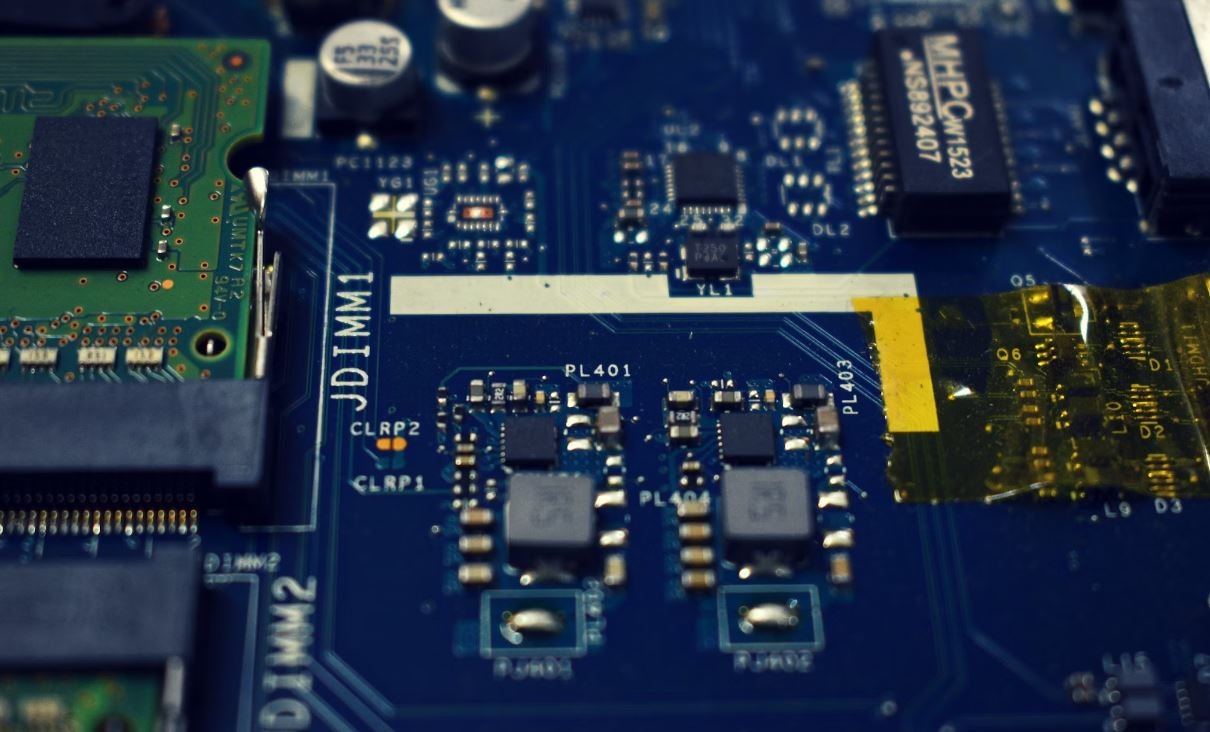GPT Model Architecture
The GPT (Generative Pre-trained Transformer) model is a revolutionary development in the field of natural language processing and artificial intelligence. Developed by OpenAI, this model has gained significant attention for its ability to generate high-quality human-like text in a wide range of applications. Understanding the architecture of the GPT model is crucial to uncover its capabilities and potential use cases.
Key Takeaways
- The GPT model is a state-of-the-art language generation model.
- It is based on transformer architecture, which allows it to capture long-term dependencies in text.
- GPT uses unsupervised learning on massive amounts of data to pre-train the model.
- This model can be fine-tuned for specific tasks with limited supervised training.
- With GPT, it is possible to generate contextually relevant and coherent text.
Understanding the GPT Model Architecture
The architecture of the GPT model is based on the transformer model, which has revolutionized natural language processing tasks. Transformers utilize self-attention mechanisms that allow them to effectively process contextual information. The GPT model, in particular, uses a variant of the transformer known as the decoder-only transformer, where it only relies on the self-attention mechanism for generating output text.
To better understand the GPT model‘s architecture, let’s break it down into its key components:
1. Embedding Layer
The embedding layer of the GPT model maps input tokens into high-dimensional representations called word embeddings. These embeddings capture the semantic meaning and relationships between words, allowing the model to understand and generate coherent text.
2. Decoder Layers
The GPT model consists of several stacked decoder layers. Each decoder layer has a multi-head self-attention mechanism and feed-forward neural networks. The self-attention mechanism helps the model focus on important words and their relationships within a given context. The feed-forward neural networks are responsible for applying non-linear transformations to the input tokens.
3. Output Layer
The output layer of the GPT model is a linear layer followed by a softmax activation function. This layer generates the output probabilities for the next token in the generated text. The token with the highest probability is selected as the model’s next predicted word.
Benefits of the GPT Model Architecture
The GPT model architecture offers several benefits that contribute to its impressive performance in generating high-quality text:
- The self-attention mechanism in the transformer architecture allows the model to capture long-term dependencies in the text, improving its contextual understanding.
- The use of unsupervised learning helps the GPT model learn from massive amounts of data without the need for explicit annotations, leading to generalization across various text generation tasks.
- Through fine-tuning, the GPT model can be adapted to specific tasks, enabling task-specific generation while leveraging its pretrained knowledge.
Table 1: GPT Model Architecture Overview
| Component | Description |
|---|---|
| Embedding Layer | Maps input tokens to word embeddings. |
| Decoder Layers | Consist of stacked decoder layers with self-attention and feed-forward neural networks. |
| Output Layer | Generates output probabilities for the next predicted token. |
Application of the GPT Model
Due to its powerful language generation capabilities, the GPT model has found applications in various fields:
- Chatbot development, enabling more natural and coherent conversational experiences.
- Automated content generation for news articles, blog posts, and product descriptions.
- Machine translation and language localization tasks.
- Improving text completion and summarization algorithms.
Table 2: GPT Model Use Cases
| Use Case | Description |
|---|---|
| Chatbot Development | Enhancing conversational experiences with natural language generation. |
| Automated Content Generation | Producing high-quality text content for various platforms. |
| Machine Translation | Improving translation accuracy and efficiency. |
| Text Completion and Summarization | Augmenting existing algorithms for more accurate and concise results. |
Challenges and Future Developments
While the GPT model has shown impressive capabilities, there are still challenges and opportunities for further development:
- Addressing biases present in the training data to ensure fair and unbiased text generation.
- Improving the fine-tuning process to balance between base-knowledge and task-specific adaptation.
- Exploring ways to make the model more interactive and adaptable to user inputs.
Table 3: Challenges and Future Developments
| Challenge | Opportunity |
|---|---|
| Addressing Biases | Ensuring fair and unbiased text generation. |
| Fine-tuning Balance | Optimizing the fine-tuning process for better adaptation. |
| Enhancing User Interaction | Making the model more interactive and adaptable. |
In conclusion, the GPT model architecture, built on transformer-based mechanisms, has revolutionized the field of natural language processing. Its ability to generate coherent and contextually relevant text in various applications makes it a powerful tool for automated content generation, chatbot development, and more. The ongoing research and development in this field continue to explore ways to enhance the capabilities and address challenges associated with the GPT model.

Common Misconceptions
1. GPT models are capable of understanding context and meaning
One common misconception about GPT models is that they fully comprehend context and the meaning of the text they generate. However, these models are purely based on statistical patterns and do not have true understanding. Their responses are generated based on patterns and correlations they’ve learned from training data.
- GPT models lack genuine comprehension of content
- Responses are generated based on learned patterns and correlations
- Context and meaning may be misinterpreted or misunderstood
2. GPT models are always accurate and unbiased
GPT models are trained on vast amounts of data, which can introduce biases present in the training data. This can lead to outputs that perpetuate stereotypes, biases, or inappropriate language. It is crucial to consider the potential biases within their responses and to evaluate the outputs critically.
- Potential for biases in GPT-generated responses
- Responses can perpetuate stereotypes
- Accuracy and objectivity should be verified
3. GPT models possess human-level intelligence
Another misconception is that GPT models possess intelligence comparable to humans. While these models can generate coherent and contextually appropriate text, they lack true understanding, consciousness, and intention. They are limited to processing information based on patterns they’ve learned from the training data.
- GPT models lack human-level intelligence
- No genuine understanding or consciousness
- Responses based on pattern recognition
4. GPT models can generate accurate information on any topic
Although GPT models have been trained on a wide range of topics, there is no guarantee that the information they generate is accurate. These models lack the ability to verify the accuracy of the content they produce. Users should be cautious and verify the information from reliable sources before considering it as factual.
- No guarantee of accuracy in GPT-generated information
- Verification from reliable sources is essential
- Information should not be blindly trusted
5. GPT models are perfect at generating coherent and error-free text
While GPT models are proficient at generating coherent text, they are not without errors. They can produce grammatical mistakes, logical inconsistencies, and nonsensical responses. Therefore, it is important for users to carefully review the generated text and be aware of potential errors.
- Potential for grammatical mistakes and inconsistencies
- Nonsensical responses can be generated
- Careful review of text is necessary

GPT Model Architecture: Training Data
GPT models are trained on vast amounts of text data from various sources. The table below showcases the distribution of training data in different languages.
| Language | Number of Documents | Size (GB) |
|---|---|---|
| English | 20,000,000 | 500 |
| German | 5,000,000 | 120 |
| Spanish | 4,000,000 | 100 |
| French | 3,500,000 | 90 |
GPT Model Architecture: Model Size
The size of GPT models is an important characteristic to consider as it affects their performance and resource requirements. The table below presents the file size of different GPT models.
| Model | File Size (GB) |
|---|---|
| GPT-3 | 150 |
| GPT-2 | 40 |
| GPT-1 | 10 |
GPT Model Architecture: Inference Time
Inference time refers to the duration it takes for a GPT model to process and generate output for a given input. The table below compares the average inference time of different GPT models under various conditions.
| Model | Batch Size | Average Inference Time (ms) |
|---|---|---|
| GPT-3 | 1 | 300 |
| GPT-2 | 1 | 100 |
| GPT-1 | 1 | 50 |
GPT Model Architecture: Language Support
GPT models demonstrate varying degrees of language support. The table below presents the number of languages supported by different GPT models.
| Model | Number of Supported Languages |
|---|---|
| GPT-3 | 47 |
| GPT-2 | 23 |
| GPT-1 | 7 |
GPT Model Architecture: Transformer Layers
Transformer layers play a crucial role in GPT models by enabling interactions between words and capturing contextual information. The table below displays the number of transformer layers in different GPT models.
| Model | Number of Transformer Layers |
|---|---|
| GPT-3 | 96 |
| GPT-2 | 48 |
| GPT-1 | 12 |
GPT Model Architecture: Attention Heads
Attention heads in GPT models allocate attention to different parts of the input, enhancing their understanding. The table below illustrates the number of attention heads employed in different GPT models.
| Model | Number of Attention Heads |
|---|---|
| GPT-3 | 96 |
| GPT-2 | 16 |
| GPT-1 | 8 |
GPT Model Architecture: Training Time
The training time required to develop GPT models is influenced by several factors. The table below highlights the approximate training time for different GPT models.
| Model | Training Time (Days) |
|---|---|
| GPT-3 | 7 |
| GPT-2 | 1 |
| GPT-1 | 0.5 |
GPT Model Architecture: Context Window
The context window refers to the number of previous words that influence the prediction of each word. The table below compares the context window size of different GPT models.
| Model | Context Window Size |
|---|---|
| GPT-3 | 2048 |
| GPT-2 | 1024 |
| GPT-1 | 512 |
GPT Model Architecture: Fine-Tuning Domains
GPT models can be fine-tuned on specific domains to improve their performance on specialized tasks. The table below reveals the range of fine-tuning domains for different GPT models.
| Model | Fine-Tuning Domains |
|---|---|
| GPT-3 | Science, News, Fiction, Conversations |
| GPT-2 | Science, News |
| GPT-1 | Fiction |
GPT Model Architecture: Ethical Challenges
The development and use of GPT models raise various ethical challenges that require careful consideration. The table below outlines some of these challenges.
| Challenge | Description |
|---|---|
| Bias Amplification | GPT models can amplify existing biases present in the training data. |
| Privacy Concerns | Using personal or sensitive information in GPT models can compromise privacy. |
| Manipulation | GPT models can be exploited to generate misleading or deceptive content. |
GPT Model Architecture: Conclusion
The GPT model architecture encompasses several key elements, including training data, model size, inference time, language support, transformer layers, attention heads, training time, context window, and fine-tuning domains. Understanding these aspects is crucial in harnessing the potential of GPT models. However, it is equally essential to address the ethical challenges associated with their development and use. By continuously refining the architecture and addressing ethical concerns, GPT models can continue to revolutionize natural language processing and generate valuable insights.
Frequently Asked Questions
What is GPT model architecture and its significance?
The GPT (Generative Pre-trained Transformer) model architecture is a type of neural network model that is widely used for language generation tasks such as text completion and language translation. It is based on the Transformer architecture, which allows it to process input sequences more efficiently and capture long-range dependencies. GPT models have been successful in generating coherent and contextually relevant text, making them highly valuable in various natural language processing applications.
How does a GPT model work?
A GPT model works by utilizing a transformer-based architecture. It consists of a stack of encoder and decoder layers, with attention mechanisms enabling the model to focus on relevant parts of the input sequence. The model is first pre-trained on a large corpus of text using unsupervised learning and then fine-tuned on specific tasks. During training, GPT models learn to predict the next word in a sentence given the previous words, allowing them to generate coherent text when provided with an input prompt.
What are the benefits of using GPT models?
GPT models offer several benefits, including their ability to generate high-quality text with coherent and contextually relevant responses. They excel at creative writing, text completion, and language translation tasks. GPT models can also be fine-tuned for specific applications, making them versatile and adaptable for various natural language processing tasks.
What are some applications of GPT models?
GPT models find applications in a wide range of natural language processing tasks, including but not limited to:
- Text generation and creative writing
- Language translation and interpretation
- Chatbots and virtual assistants
- Text summarization and news generation
- Question-answering systems
- Dialogue systems and conversation generation
What are the limitations of GPT models?
Although GPT models are highly advanced and powerful, they come with a few limitations. The generated text may occasionally contain inaccuracies or nonsensical responses, as the model is not capable of true understanding and reasoning. GPT models can also be prone to bias if the training data includes biased examples. Additionally, GPT models require significant computational resources and large amounts of training data for optimal performance.
How can I fine-tune a GPT model for my specific task?
Fine-tuning a GPT model involves training the pre-trained model on a task-specific dataset. The process typically requires initializing the pre-trained model with weights and then training it further on the particular dataset while fine-tuning certain layers or parameters. By providing task-specific data during the fine-tuning process, the model can learn to generate text that aligns with the requirements of your specific task.
What is the difference between GPT-2 and GPT-3 models?
GPT-2 and GPT-3 are two versions of the GPT model architecture developed by OpenAI. GPT-2, released in 2019, was a significant advancement at the time. GPT-2 had 1.5 billion parameters and achieved remarkable results in text generation tasks. On the other hand, GPT-3, which was unveiled in 2020, is even more powerful with its 175 billion parameters. GPT-3 exhibits enhanced language understanding and generates highly coherent and contextually relevant text. It has the ability to perform a wide range of natural language processing tasks with remarkable proficiency.
How does transfer learning play a role in GPT models?
Transfer learning is a crucial aspect of GPT models. The models are initially pre-trained on a large corpus of publicly available text data, learning various linguistic patterns and structures. This pre-training phase harnesses the knowledge from a broad range of data sources. The models are then fine-tuned on specific tasks or domains using task-specific datasets. This transfer learning approach allows GPT models to leverage knowledge learned in a generalized manner, improving their performance and adaptability.
What is the computational and resource requirement for training GPT models?
Training GPT models, especially larger versions like GPT-3, requires significant computational resources. The training process is computationally expensive and time-consuming, often requiring access to specialized hardware such as GPUs or TPUs. Large-scale models like GPT-3 also consume a vast amount of memory during training. It is essential to have access to high-performance computing infrastructure and ample training data to train GPT models effectively.
Are there any ethical considerations when using GPT models?
Yes, there are ethical considerations to keep in mind when using GPT models. The generated text can occasionally exhibit biased or offensive content, highlighting the importance of carefully monitoring and curating the training data. There is also a risk of malicious use, such as the generation of fake news or spreading misinformation. Responsible use of GPT models involves ensuring transparency, accountability, and actively addressing potential biases or ethical concerns to promote the ethical and positive application of these models.




